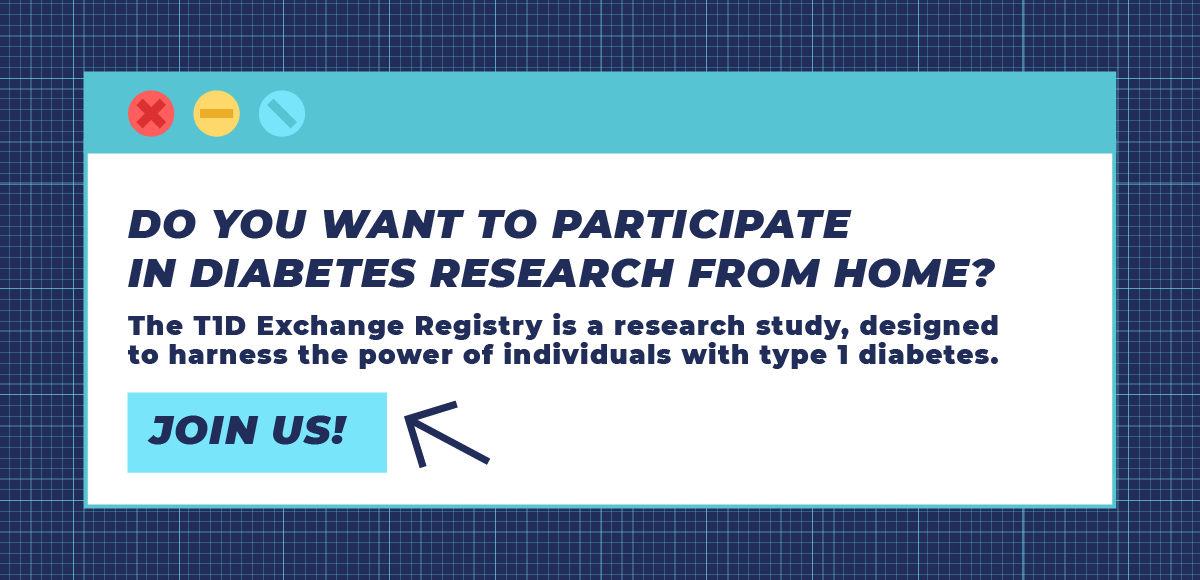
Sign up for a new account.
And get access to
The latest T1D content
Research that matters
Our daily questions
Sign up by entering your info below.
Reset Your Password
Don't worry.
We will email you instructions to reset your
password.
Every year, the Advanced Technologies & Treatments for Diabetes (ATTD) conference brings together diabetes researchers worldwide. In Amsterdam on March 19-22, 2025, data from the T1D Exchange Quality Improvement Collaborative (T1DX-QI) was shared in three oral presentations and one poster.
Presentation topics included:
- Early Initiation of Automated Insulin Delivery At Type 1 Diabetes Diagnosis In Children And Adolescents Is Associated With Improved Outcomes At Two Years Post-Diagnosis
- Young Adult Diabetes Technology Use in Pediatric and Adult Practices
- Diabetic Ketoacidosis and Severe Hypoglycemia in Adults with Type 1 Diabetes and Chronic Kidney Disease: Data from T1D Exchange Real-World Observation Study
- Healthcare Disparities in Adults with Type 1 Diabetes and Chronic Kidney Disease
Continue reading for summaries of these presentations!
Early Initiation of Automated Insulin Delivery At Type 1 Diabetes Diagnosis In Children And Adolescents Is Associated With Improved Outcomes At Two Years Post-Diagnosis
This study examined the impact of early initiation of automated insulin delivery (AID) on health outcomes in children and adolescents with type 1 diabetes (T1D). Using data from the T1D Exchange Quality Improvement Collaborative (T1DX-QI)’s EHR dataset, we analyzed outcomes two years after diagnosis among 44,665 children with T1D.
Our findings suggest that early adoption of AID improves longer-term diabetes management and reduces the risk for severe hypoglycemia and diabetes-related ketoacidosis (DKA).
We looked at when these children began using an AID system after their diagnosis and split them into four groups: “Early Users,” who began using AID within less than 6 months of their diagnosis; those who started AID 6-12 months post-diagnosis; “Late Users,” who began using AID 13-24 months after their diagnosis; and “Non-AID Users,” who did not use an AID system at two years after their diagnosis.
Compared to Late Users, we found that Early Users had:
- A lower average A1C
-
- Early Users: 7.1%
-
- Late Users: 7.9%
- Reduced rates of severe hypoglycemia
-
- Early Users: 0.9 events per 100 people per year
-
- Late Users: 2.7 events per 100 people per year
- Lower rates of DKA
-
- Early Users: 2.3 DKA events per 100 people per year
-
- Late Users: 7.1 DKA events per 100 people per year
Our results showed that Early Users had significantly better outcomes than Late and Non-AID Users.
Read more at OP012 / #789 in the ATTD 2025 DTT Journal.
Young Adult Diabetes Technology Use in Pediatric and Adult Practices
This study compared emerging adults (18-23 years old) with type 1 diabetes receiving care in pediatric versus adult institutions.
Using data from the T1DX-QI, the researchers analyzed 8,538 young adults from pediatric centers and 839 from adult centers.
They found that the individuals in adult institutions generally:
- Were more likely to have an A1C of 9% or higher
- Were less likely to use diabetes technologies such as CGMs and insulin pumps.
This study highlights potential challenges during the transition to adult care and underscores the need for further research to address barriers to technology use in this population.
Read more at EPD063 / #187 in the ATTD 2025 DTT Journal.
Diabetic Ketoacidosis and Severe Hypoglycemia in Adults with Type 1 Diabetes and Chronic Kidney Disease: Data from T1D Exchange Real-World Observation Study
This study used EHR data for adults with type 1 diabetes to compare rates of DKA and severe hypoglycemia in those with and without chronic kidney disease (CKD).
The data showed that CKD in people with T1D is associated with a modest increase in DKA risk, while severe hypoglycemia risk remains similar after accounting for key demographic and treatment-related factors.
Out of 49,178 people with T1D, 3.2% had CKD. The group of people with T1D and CKD had an average age of 56.7 years, while the group without CKD had an average age of 30.4 years. The group of people with CKD also had a longer duration of T1D than those without CKD.
Unadjusted analyses showed increased rates of severe hypoglycemia among people with CKD. However, after adjusting for factors like age, sex, race/ethnicity, and technology use, the severe hypoglycemia rates were similar between both groups.
However, the adjusted analysis revealed a small but statistically significant increase in DKA rates among people with T1D and CKD.
Read the full abstract at EPD087 / #922 in the ATTD 2025 DTT Journal.
Healthcare Disparities in Adults with Type 1 Diabetes and Chronic Kidney Disease
Similar to the above presentation, this poster used our quality improvement collaborative’s EHR database to compare demographic characteristics and health outcomes between adults with T1D who have CKD and those who do not.
Here are the findings:
- The group of people with T1D and CKD had nearly twice the representation of non-Hispanic Black individuals than the group without CKD.
-
- T1D with CKD: 23% were non-Hispanic Black
-
- T1D without CKD: 12% were non-Hispanic Black
- People with T1D and CKD were less likely to use insulin pumps than those without CKD.
-
- T1D with CKD: 26%
-
- T1D without CKD: 46%
- People with T1D and CKD were less likely to use a CGM than those without CKD.
-
- T1D with CKD: 45%
-
- T1D without CKD: 53%
- The group of people with T1D and CKD had a lower average A1C than the group without CKD.
-
- T1D with CKD: 8.0%
-
- T1D without CKD: 8.4%
Read the full abstract at EPV441 / #990 in the ATTD 2025 DTT Journal.
Sarah Howard
Related Stories
2 Comments
Advances in Diabetes Management: Highlights from ATTD 2025 Cancel reply
You must be logged in to post a comment.








https://snap-chatsolarsystem.com/ten-reasons-why-small-businesses-need-social-media-presence/
I really like how T1D Exchange’s article about ATTD 2025 combines knowledge – it feels like playing solitaire bliss relaxing and learning something new!